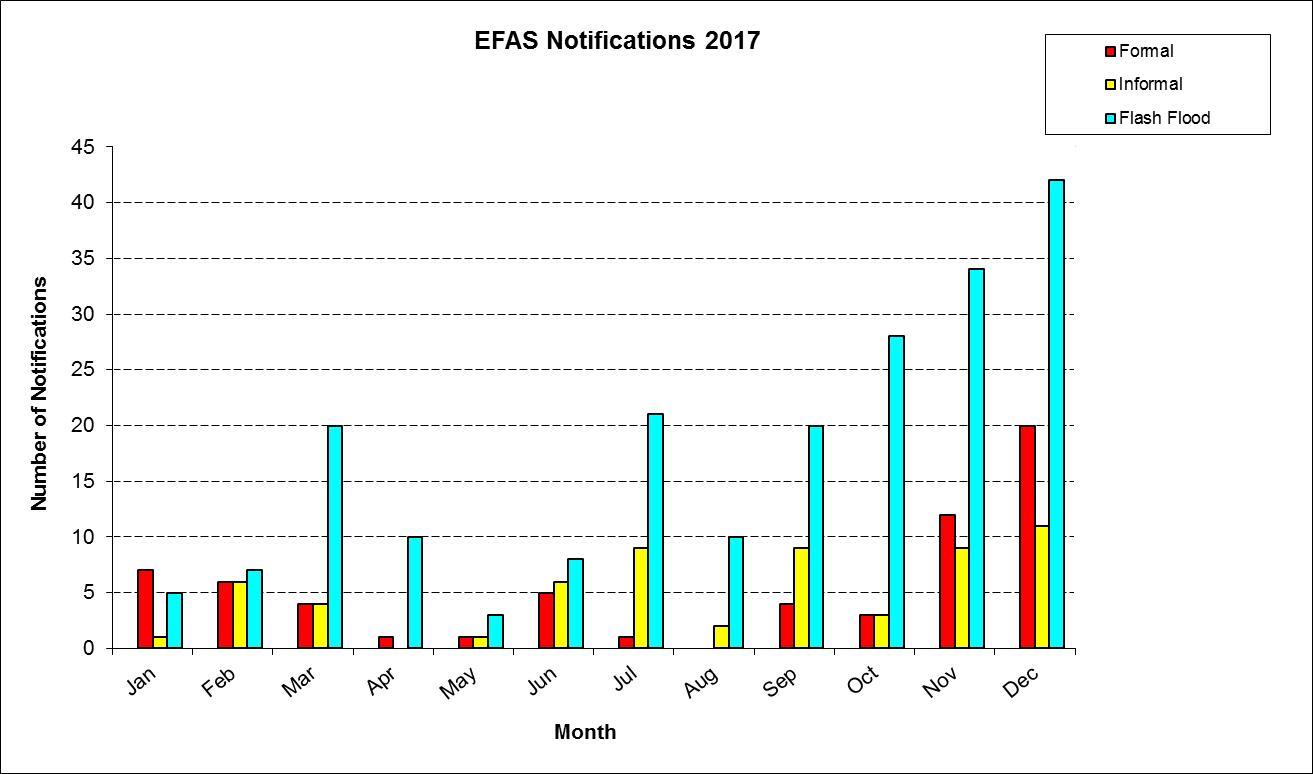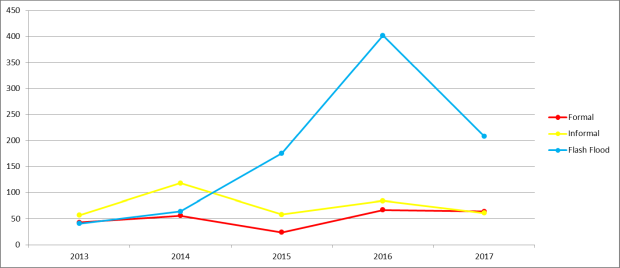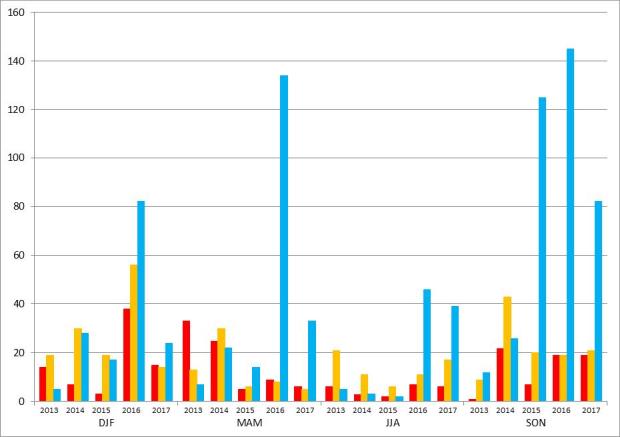
by Erik Sprokkereef, RWS, EFAS Dissemination Center
The notifications sent in 2017 were concentrated towards the end of the year. November and December were the most active months with 55 and 73 notifications, which is about 40% of the total number of notifications of 2017. December also saw the most formal notifications issued, while March-May were very quiet in terms of flood notifications. In total 64 formal, 61 informal and 208 flash flood notifications were issued in 2017.
2017 was an average year for formal and informal notifications as in comparison with the total number of EFAS notifications issued per year for the past 5 years (Figure 1). After the spectacular increase in 2016, the number of flash flood notifications returned to a level comparable to 2015.


Figure 2 breaks down the number of notifications over the past 5 years into seasons (December-January-February [DJF], March-April-May [MAM], June-July-August [JJA] and September-October-November [SON]). The most active seasons in terms of river flooding over the past 5 years are the winter (DJF) of 2016, the spring (MAM) of 2014 and the autumn (SON) of 2016.
In 2017 in total 30 countries received 333 notifications (64 formal, 61 informal and 208 flash flood notifications). Spain received the highest number of notifications (8 formal, 3 informal and 22 flash flood notifications). The most formal notifications were sent to Greece (11), followed by France (9) and Spain (8), the most informal notifications to Hungary and Italy (9) and the most flash flood notifications to Spain (22), followed by Germany (16), Poland, Romania and Slovakia (14).
Based on the number of notifications issued from 2013-2017, the most formal flood notifications are issued in winter and spring (about 15 per year on average), informal notifications in winter (28 per year on average) and flash flood notifications in autumn (78 per year on average). The season with the fewest formal notifications is the summer (about 5 per year on average).

